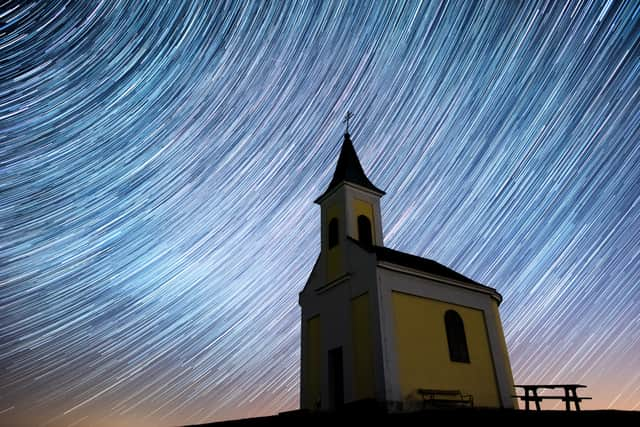Lyrids Meteor Shower 2022 Glasgow: when is it, what time can I see shooting stars - and weather forecast
and live on Freeview channel 276
This is the first time stargazers across the UK will be able to see shooting stars since January.
The Lyrid Shower is popular among amateurs and expert stargazers alike. The shower was first documented as being noticed in 687BC in Chinese manuscripts and chronicles.
So when can people in Glasgow catch the Meteor shower?
Advertisement
Hide AdAdvertisement
Hide AdHere’s everything you need to know about Lyrids Meteor Shower.
When is the Lyrids Meteor Shower?
Now. The shower actually began on 14 April, but will continue until 30 April 2022.
When is the best time to see it?
Accuweather reports that the shower will reach its peak tonight (21 April). At its peak the shower is forecast to produce an impressive 15-20 meteors an hour.
However, other peak days for the shower are 22 and 23 April when you still might be able to catch a glimpse of the ‘celestial fireworks’.
Advertisement
Hide AdAdvertisement
Hide AdThe shower will likely be producing less meteors by this point so you may have to wait a little longer to see them.
In 1922 the shower was reported to have produced up to 100 meteors per hour.
What is a Meteor Shower?


According to the Royal Observatory, it is when the Earth encounters many meteors at once. They are clouds of debris that come from specific sources.
Every Meteor shower has a progenitor Comet, which is where the debris comes from.
Advertisement
Hide AdAdvertisement
Hide AdAn example of this is Halley’s Comet. This orbits the Sun every 76 years, and is the progenitor of the Orionids shower.
As Halley’s Comet gets closer to the Sun it heats up and starts to evaporate due to its icey state. Rather than becoming liquid the pieces turn into particles and create a cloud of debris.
The comet will go around the Sun filling its orbit with the debris. Sometimes the orbit will coincide with the Earth’s and will go through the debris.
The debris will burn up in the Earth’s atmosphere thus creating a Meteor shower or shooting stars.
Advertisement
Hide AdAdvertisement
Hide AdWhat is the weather forecast for Glasgow?
The weather forecast is a major component of whether or not you will be able to see the meteor shower in your area.
Here’s a breakdown of the latest weather updates from the Met Office.
Tonight
Following a sunny day the night is expected to remain mostly clear. Cloud cover is forecast to be at 23%.
Temperatures are set to drop to lows of 7°C so make sure you stay wrapped up.
Advertisement
Hide AdAdvertisement
Hide AdFriday
Friday is forecast to be similar to Thursday. The weather will be partially sunny with temperatures hitting highs of 16°C.
However, cloud cover is set to increase to 45% so those hoping to catch a glimpse of the shower may want to get out as early as possible.
As we move into the evening temperatures are set to drop to 7°C. Cloud cover is due to increase further with 70% coverage.
When is the next Meteor Shower?
According to Accuweather, the Eta Aquarid meteor shower is the next one that people across the UK will be able to see. The shower will peak on the night of 4 May into 5 May.
This will also feature around 15 to 20 meteors per hour for people in the Northern Hemisphere.
Comment Guidelines
National World encourages reader discussion on our stories. User feedback, insights and back-and-forth exchanges add a rich layer of context to reporting. Please review our Community Guidelines before commenting.
